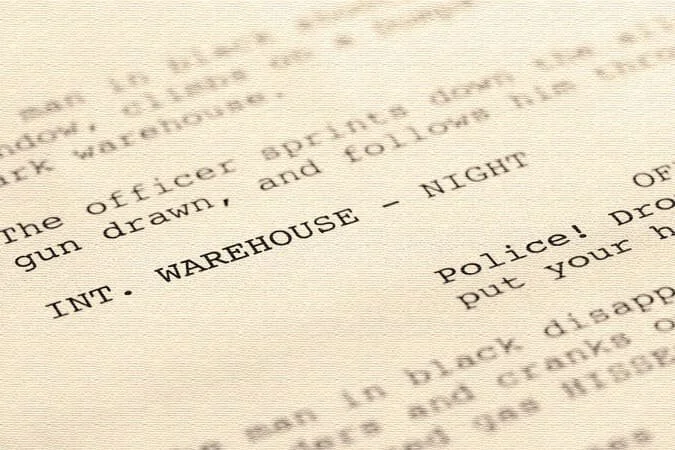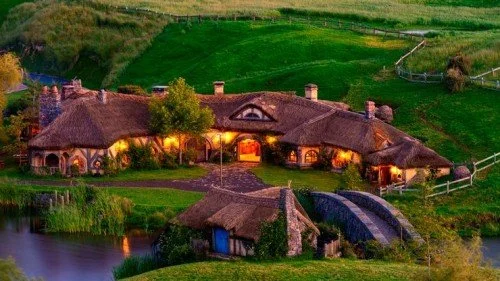Acting 101: Master Environment In Your Self-Tape Auditions
By: Eddie Ramos | March 31, 2022 9:20 AM
Creating a believable environment in your self-tapes can be the thing that takes your auditions to the next level. It can make directors finally start paying attention to you. So how do you create an environment? What should you consider when thinking about this? Here are the acting tips to master environment in your next self-tape audition.
What Is Environment In Acting?
Environment refers to the physical location a scene takes place. It also represents the sense of privacy vs publicness the character experiences in a scene. Lastly, the environment also covers proxemics and space. The areas of social space include 1) intimate space; 2) personal space; 3) social space; 4) formal space.
Environment And The Actor
Actors must remember that every scene takes “place” somewhere. Those locations vary from project to project and scene to scene. Star Wars for example takes place in a galaxy far, far away. From scene to scene the characters are thrust onto different planets, aircraft, secret lairs, and bawdy nightclubs. You could even say that these locales become “characters” of the movie in their own right.
Read More Acting 101: The Moment Before And The Button: An Actor’s Method To Start And End A Scene
The Imperial battle station known as the Death Star. Photo courtesy of StarWars.com
Regardless if the Death Star holds any significance to you, it does so for all characters who enter it. Therefore the actor is required to make it a part of their performance if they want to truly honor the reality of the character they are playing and their given circumstances.
How To Practice Creating The Environment In Your Rehearsals
It can be particularly challenging for the actor to imagine that their rehearsal space is a lush and green as The Shire or awe-inspiring as Jurassic Park!
Hobbiton From Lord Of The Rings, New Zealand
Practicing visualization and engaging imagination will help with this. However, there are some tips and tricks in order to achieve this goal as well.
🚩 Map Out The Space
On a piece of paper draw the location of where the scene takes place in extreme detail. Taking into account where every little item that would naturally be in the room. So if the scene takes place in a kitchen, for example, map out where the stove, fridge, the table will all be in relation to one another.
The next step would be to set up your rehearsal space to replicate the kitchen. Using blocks or furniture you already own, will help you envision the space and will dictate what type of movement you can or can not do.
🚩 Think About The Time Of Day
Time of day greatly affects how our characters interact with the other elements of the scene, especially other characters. That’s why it’s important to focus on what time of day it is and to decide how your character feels about it. Does the scene take place in the early morning but your character is a night owl? Or does the scene take place at the office midday and your character turns into a walking zombie if they don’t get their afternoon caffeine boost?
Pro-Tip: Most scenes if written correctly will include the time day at the very beginning of every new scene. So hopefully this is easy to implement asap.
🚩 Remember Privacy Vs Publicity
Can you recall a time when you were having a very private conversation in a public place? Were you whispering or checking to see if anyone was listening? Or vice versa, can you recall the last argument you had from the safety of your home? It’s possible your anger got your volume to a decibel only dogs can hear? Modern actors everywhere must remember that the environment where the scene takes place greatly affects the delivery of their lines, volume, and physicality.
🚩 Entering and Exiting
“You may enter!” Why is it that so many actors neglect the stage directions, character ENTERS, or character EXITS? If you choose to ignore these directions, then you’ve missed the marvelous choices available to you to use environment to “contain” the scene. For example, really enter the great hall taking in the architecture before you say your first line. Or as you say your last line really escort the prisoners into their cells off-screen.
Pro-Tip For Self Tapes Only: Measure out how many steps it will take you to be completely out of frame when you “exit”. On the other hand, you may “enter” with your body already in the frame so that your tape doesn’t start with the image of an empty room.
Don’t Be Like Every Other Actor
To wrap up, I want to remind you not to be like every other actor forgetting to incorporate environment. Acting requires the use of all five senses. Sight, smell, taste, touch, and hearing. You might say, but when I book the job the environment will be provided for me in the set and shooting locations. To that I say, it is our jobs as actors to give the directors a close look into what we will do on a shoot day in your initial audition.
Lastly, when he hear the words “make a big choice.” Actors get in their heads and try to come up with all kinds of absurd possibilities. Kermit the frog accents, yelling at top of their lungs, flipping into the scene, etc… but what if connecting deeper to your moment before was a choice? Or attaching to your character’s relationship more? Therefore, the environment is not only for the characters to respond to, but for the actor to use to make distinct and specific “big” choices. ✊
If you found this article interesting and want to learn more about The Modern Actor approach. Check out the blog or book a free consultation call to see how TMA can help you take your acting to the next level.




